All issues

Successor
Volume 37, Issue 10
Displaying 1-3 of 3 articles from this issue
- |<
- <
- 1
- >
- >|
-
III. Some Observations Using Trypsinized Monolayer Cell Cultures, with Special Reference to Cultivation with Serum-free Medium and Hemadsorption PhenomenonSusumu HOTTA, Akio OHYAMA, Manabu TAKEHARA, Hideo AOKI1964 Volume 37 Issue 10 Pages 369-377
Published: January 20, 1964
Released on J-STAGE: November 25, 2011
JOURNAL FREE ACCESS1) Attempts were made to cultivate JBE virus (mousepassaged G1 strain) in trypsinized hamster or chick kidney cell cultures using serum-free media. Serum ultrafiltrate was suitable as a substitute for bovine serum for maintenance of cells as well as for multiplication of virus. Medium consisting of 0.5% tryptose and 0.5% lactalbumin hydrolysate in Hanks' balanced salt solution, as proposed by Hwang et al (1959), could be used as a maintenance medium, bringing about viral yields not inferior to those by using serum-containing medium; the apparent stability of this medium against autoclaving was of technical advantage. Neither No.199 mixture alone, nor medium containing polyvinylpyrrolidone in place of serum, were as satisfactory.
2) Tissue culture hemadsorption (THA) by JBE virus in hamster or chick kidney cell cultures was observed. Cell cultures, previously immersed in borate buffer saline (BBS; pH 9.0) at 37°C for 30 minutes, were added with 2% suspension in BBS (pH 5.8) of erythrocytes from 2 to 7-day-old chicks. In virus-infected cultures, agglutination or chain formation of erythrocytes occurred on or around cultured cells. The reaction was inhibited by treating cultured cells with antiviral antiserum prior to the addition of erythrocytes. A tendency was shown that THA became positive earlier than appearance of CP and was intensified in parallel with increase of active virus in culture fluid. Viral neutralization was possible by utilizing inhibition of THA as the indicator ; such tests correlated well with results obtained in either CP prevention or mouse protection tests. A possibility to use THA as a measure for assay of JBE virus and antibody was suggested. Optimal pH's for THA in JBE-infected hamster kidney cell cultures were approximately 7.0 in the case of using phosphate buffer saline or near 9.0 when examined using borate buffer saline.View full abstractDownload PDF (4239K) -
I. Biochemical Behaviour of Pseudomonas AeruginosaTadashi TAKIGAMI, O. KITAMOTO1964 Volume 37 Issue 10 Pages 378-383
Published: January 20, 1964
Released on J-STAGE: November 25, 2011
JOURNAL FREE ACCESSThe Definition of Pseudomonas aeruginosa studied here is as follows:
Gram-negative motile bacillus, which liquefies gelatin and grows readily at 42°C. on ordinary media. Litmus milk becomes alkaline.
Seventy two strains of Pseudomonas aeruginosa isolated chiefly in our laboratory from various clinical materials were studied in present investigation and it was found that they had the following biochemical behaviour.
1. Activity to carbohydrates in 70 strains, glucose, xylose and arabinose were oxidized, but not fermented.
In 1 strain, glucose, xylose and arabinose were neither oxidized nor fermented In 1 strain, glucose wasre neither oxidized nor fermented, but xylose and arabinose oxidized, not fermented.
Any of rhamnose, lactose, maltose, sucrose, dulcitol and mannitol were not attacked oxidatively or fermentatively.
2. In all Pseudomonas aeruginosa strains, indole was not produced. Methyl red and Voges-Proskauer tests negative. Sodium Citrate utilization positive.
3. Cytochrome oxidase test (Gaby) was positive in all pseudomonas aeruginosa strains.
4. Pyocyanin and fluorescein which were not demonstrable in ordinary agar slant were demonstrated in King's medium A and B, respectively.
Mannitol stimulated the production of pyocyanin.View full abstractDownload PDF (939K) -
1964 Volume 37 Issue 10 Pages 398-399
Published: January 20, 1964
Released on J-STAGE: November 25, 2011
JOURNAL FREE ACCESSDownload PDF (269K)
- |<
- <
- 1
- >
- >|